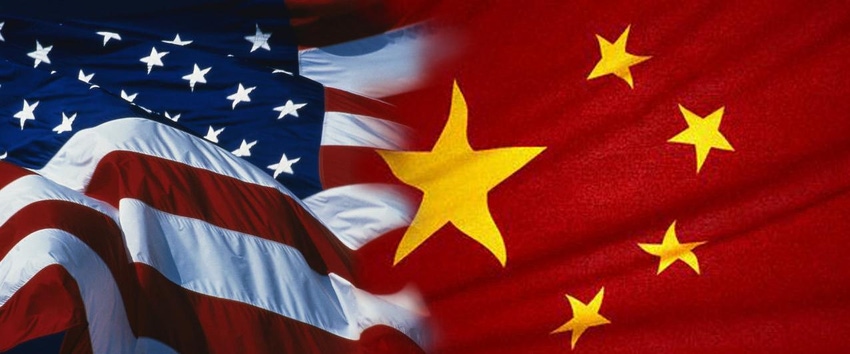
by Jenny Leonard
The world’s two largest economies are nearing the finish line on a trade deal that could be signed by President Donald Trump and his Chinese counterpart Xi Jinping as early as this month. But that doesn’t mean the trade war ends.
More work remains on a deal that will ensure that Beijing will follow through on its commitments, U.S. Trade Representative Robert Lighthizer told Congress last week. Days later, Trump warned he can still walk out on China like he did with North Korean leader Kim Jong Un at their summit over a nuclear deal in Vietnam.
There was a sign of de-escalation on Tuesday, when the U.S. confirmed it’s postponing “until further notice” a scheduled tariff increase on Chinese goods. It had been set to take effect March 1, but now the rate will remain at 10 percent, according to a statement from the U.S. Trade Representative’s office.
Here’s the latest on where the U.S.-China trade negotiations stand.
Tariffs Truce?
China wants Trump to remove tariffs that he imposed last year on $200 billion of Chinese goods, but it’s not yet clear if the president will roll back some or all of the duties. (The U.S. duties on $200 billion of Chinese imports come on top of a first round on $50 billion of goods, which Beijing will also wants to see eliminated.)
There are competing forces inside the Trump administration that are debating how wise it would be to lift the duties on the first day of a deal because keeping some of the tariffs in place would allow the U.S. to maintain leverage.
Some advisers argue that the tariffs should only be fully removed once China lives up to all of its pledges, which could take months or even years. Even if some or most tariffs are removed at the outset they could come back as part of the enforcement mechanism, to punish China if it breaks the terms of any trade deal, Lighthizer said last week.
Still, the U.S. president has repeatedly delayed implementing higher duties on goods to give the two sides more time to strike a broad deal.
Enforcement Piece
Lighthizer has said the two countries plan to set up a system that requires regular consultations at various levels of the U.S. and Chinese governments to address irritants. If talking doesn’t yield progress, Lighthizer said the U.S. will respond with ”proportional” and ”unilateral” action, likely referring to tariffs.
On its face, the mechanism looks similar to previous negotiating efforts the U.S. and China used to discuss trade issues -- and that the Trump administration said it would abandon because they haven’t been successful in getting Beijing to make the required changes to its trade policies. China hawks have already picked up on that, which could make it even harder to sell the agreement to a skeptical audience that’s expecting a different result from this White House than what previous administrations got in years of failed economic dialogues.
Trump’s team is asking China to give up its right to retaliate should the U.S. take action unilaterally. The U.S. also wants China to refrain from bringing any challenges at the World Trade Organization. It’s not clear if Beijing has agreed to that plan yet and what, if any, changes it is asking for.
Soybean Solution
While Lighthizer has emphasized that he’s seeking a deal that’s more than what he dubbed a “soybean solution,” significant amounts of purchases are on the table in the talks.
China has offered to increase purchases of U.S. goods by $1.2 trillion over six years, benefiting agriculture and energy. That would help sell the deal to the president who has pledged to reduce the chronic U.S. trade deficit with Beijing.
Trump on Friday asked China to immediately remove all tariffs on U.S. agriculture, though he didn’t indicate if his demand was limited to retaliatory duties or more far-reaching.
But Lighthizer and his team are more focused on China making structural changes to its intellectual property practices and policies that require U.S. companies to transfer their technology to Chinese entities as a condition of doing business in the country.
Tricky Politics
Trump’s deal will most definitely be scrutinized by Democrats and more hawkish members of his own party who have been outspoken about the need for the president to hold a tough line in the talks with Beijing. Senate Minority Leader Chuck Schumer last week urged Trump to hold out until he gets a deal that addresses structural issues in China’s economy.
“President Trump should not fall into the trap of seeking a deal for the sake of a deal, especially now that the talks with Pyongyang are on hold,” Schumer said on Thursday. “What he did in North Korea was right, he must do the same thing in China -- hold out, because he has the upper hand, until we get China to do the right thing.”
Still, Trump doesn’t need, at least practically-speaking, the help of lawmakers. The White House will treat this deal as a so-called executive agreement, that doesn’t require the Congressional stamp of approval, because there won’t be changes to U.S. tariff lines.
To contact the reporter on this story: Jenny Leonard in Washington at [email protected]
To contact the editors responsible for this story: Brendan Murray at [email protected] Sarah McGregor, Alister Bull
© 2019 Bloomberg L.P
About the Author(s)
You May Also Like




